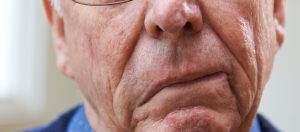 Every 40 seconds, someone in America has a stroke. While they are the fifth-leading
cause of death in the United States, strokes are both preventable and
treatable. May is American Stroke Month, a time to raise awareness about
stroke prevention and treatment. To do that, we must know the risk factors
and warning signs.
Every 40 seconds, someone in America has a stroke. While they are the fifth-leading
cause of death in the United States, strokes are both preventable and
treatable. May is American Stroke Month, a time to raise awareness about
stroke prevention and treatment. To do that, we must know the risk factors
and warning signs.
Stroke Risk Factors
Poor diet and lack of exercise can increase your chance of stroke. Furthermore,
there are a number of pre-existing conditions that put you at higher risk:
- High Blood Pressure
- Smoking
- Diabetes
- Obesity
- High Cholesterol
- Heart Disease
- Atrial Fibrillation
- Sickle Cell Disease
Stroke Warning Signs
To identify someone who might be having a stroke and get help, the
American Stroke Association recommends learning the F.A.S.T. warning signs:
-
Face Drooping
-
Arm Weakness
-
Speech Difficulty
-
Time to Call 911
If you think you are having a stroke, call 911 right away. “Don’t wait. To receive the medications you need, you have to be here within
two hours of symptom onset,” says Ashlee Pinion-Raby, CVMC stroke program coordinator.
First responders are trained to identify stroke victims and begin treatment
in the field. Once at the hospital, patients are assessed by a local emergency
room physician and given a CT scan. Then, using a stroke robot referred
to as “Webster,” a stroke-specific neurologist from Wake Forest
Baptist Health performs a second assessment. The two physicians work together
to determine whether the patient qualifies for tPA, a quick-acting, clot-dissolving
drug that helps restore blood flow to the brain. “You have two physicians
collaborating to get you the care you need right when you need it,”
Pinion-Raby says.
Prevention
Of course, preventing strokes is the ultimate goal. Increasing your physical
activity, improving your diet, and quitting smoking all help reduce the
likelihood of a stroke. If you have any of the pre-existing conditions
that put you at a higher risk of stroke, be sure you are managing those
with healthy lifestyle choices, diet and prescribed medication.
If you’re a stroke survivor or caregiver, CVMC offers a monthly stroke
support group held the
second Tuesday of each month in the CVMC Outpatient Rehabilitation Center at 810 Fairgrove Church Rd,
SE Hickory 28602 (located to the right of the Medical Center).
The stroke support group’s goal is to provide stroke survivors, their
families and caregivers education, resources and an opportunity to support
each other as they strive to rebuild their lives. Attendees, while meeting
other survivors who are likely experiencing similar challenges, will find
this to be a structured way to share with and support each other, as well
as their caregivers and family members. Education offered by physicians,
therapists, dietitians, nurses, stroke survivors and caregivers will focus
on Making the Most Out of Life and Coping with Stroke as well as emphasize
good health, independence and well-being.
For more information on stroke prevention and treatment, please visit
www.strokeassociation.org.